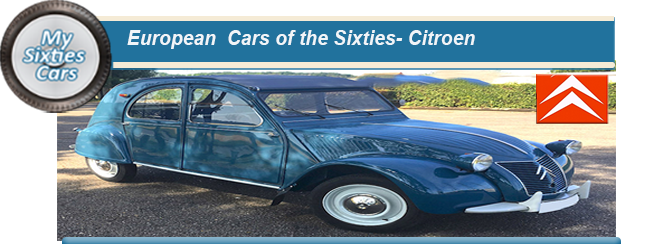
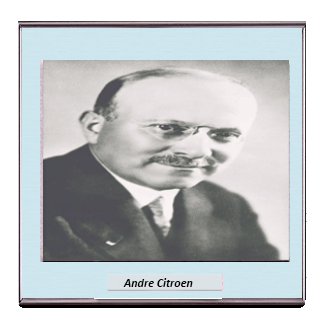 Their winning formula was that although not all of their designs were particularly pleasing to the eye, they were all extremely functional and well priced.
Their winning formula was that although not all of their designs were particularly pleasing to the eye, they were all extremely functional and well priced.
The driving force behind the Citroen’s initial success was Andre Citroen, a gifted engineer, industrialist and entrepreneur who founded his company,Automobiles Citroën in 1918.
From the moment that the first Citroën rolled off the production line at the company’s plant in Javel, success followed success as Andre drove the company forward unrelentingly, his remarkable dynamism embracing every concept of Citroën management structure.
 Andre Citroën had ideas that were so far ahead of their time, including creating an exclusive dealer network that covered the whole of France, ensuring that Citroën road signs would be distributed extensively throughout the entire French road network.
Andre Citroën had ideas that were so far ahead of their time, including creating an exclusive dealer network that covered the whole of France, ensuring that Citroën road signs would be distributed extensively throughout the entire French road network.
Citroën even went as far as renting the landmark Eiffel Tower in the very heart of Paris and using it as the world's largest advertising sign.
At the same time, in the running of his massive Javel plant on the outskirts of Paris, Citroën showed that he was prepared to strive to achieve the highest levels of production standards. He did so through utilising many of the methods used by his counterparts in the giant car plants of North America, in particular, those of Henry Ford.
Andre Citroën has been recognised as the first real proponent of mass automobile production in Western Europe, with the methods he employed undoubtedly proved to be successful for the company as well as creating a harmonious work environment.
By 1920 the Citroën plant was turning out an average of 100 vehicles every day.Within the period of just ten years, Citroen had grown to become the fourth largest car producer in the world, turning out 100,000 cars annually.
![]()
By the mid-Thirties, the future only looked rosy for André Citroën and his shareholders. Always looking forward, Citroën decided that the time was ripe to instigate a major renovation to the company’s plant at Javel that had working flat out for close to two decades and was long overdue for a revamp.
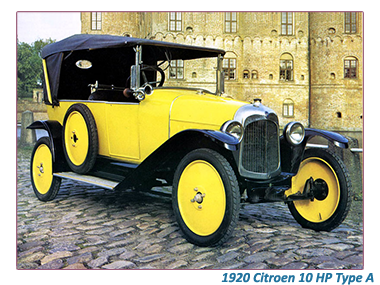 Citroën’s plans for after the factory would reopen to modernise his factory to launch a new model, which he was sure to would prove to be a significant step forward for the company.
Citroën’s plans for after the factory would reopen to modernise his factory to launch a new model, which he was sure to would prove to be a significant step forward for the company.
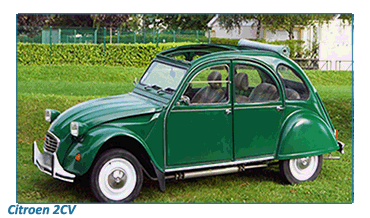 Fully extended, Citroën soon found themselves in a precarious financial situation that threatened the company’s very existence.
Such was the high regard Andre Citroën was held in the European car industry at that time, that his major creditors agreed to a creditor's moratorium on the company’s debts. However, as often happens in such situations, a minor creditor did not agree, meaning that the moratorium could not take effect.
Fully extended, Citroën soon found themselves in a precarious financial situation that threatened the company’s very existence.
Such was the high regard Andre Citroën was held in the European car industry at that time, that his major creditors agreed to a creditor's moratorium on the company’s debts. However, as often happens in such situations, a minor creditor did not agree, meaning that the moratorium could not take effect.
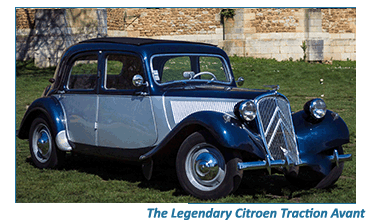 In just a few short months, Automobiles Citroën was rendered insolvent and were rapidly acquired by the Michelin Tire Company, their largest creditor.
Tragically, André Citroën, so confident that the Traction Avant would lead his company to the financial safety, had already pledged his personal shareholding in the company to his bank to buy some time.
When the company eventually folded, André Citroën found himself a broken man, both financially and morally.
In 1938 Citroën was rapidly replaced as the Chairman of the Company he had founded. Citroen passed away the following year, aged just 56, leaving his wife and children dependent on the charity of others, which, to everyone's relief, they generously received.
In just a few short months, Automobiles Citroën was rendered insolvent and were rapidly acquired by the Michelin Tire Company, their largest creditor.
Tragically, André Citroën, so confident that the Traction Avant would lead his company to the financial safety, had already pledged his personal shareholding in the company to his bank to buy some time.
When the company eventually folded, André Citroën found himself a broken man, both financially and morally.
In 1938 Citroën was rapidly replaced as the Chairman of the Company he had founded. Citroen passed away the following year, aged just 56, leaving his wife and children dependent on the charity of others, which, to everyone's relief, they generously received.
![]()
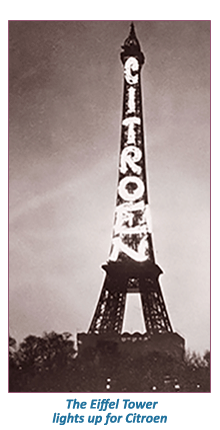 Citroën took advantage of this opportunity to the full, developing one or two very utilitarian prototypes, one of which evolved to become the 2CV, among the best-selling “ peoples cars” of post-war Europe.
Citroën took advantage of this opportunity to the full, developing one or two very utilitarian prototypes, one of which evolved to become the 2CV, among the best-selling “ peoples cars” of post-war Europe.
In the aftermath of World War Two, new cars were few and far between on the roads of Europe and furthermore, while, due to a shortage of foreign exchange, importing cars was far from being a viable proposition.
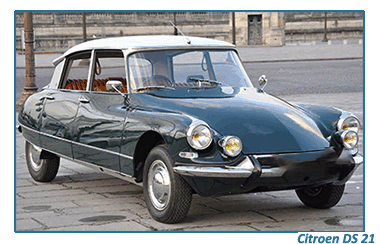 Citroën found themselves in position to take advantage of this shortage as they rapidly began to turn out versions of the Traction Avant, made up from parts which they had stockpiled before the war.
Another advantage was that the Javel plant had mainly remained intact meaning that production could begin immediately. The only way to distinguish between the pre-war and post-war Traction Avant models were Nacelles embedded in the car’s bonnet in place of air inlet flaps.
Sales of the Traction Avant kept Citroën afloat in the challenging years after World War Two providing the company with valuable time before the launch of the eagerly awaited 2CV.
Citroën found themselves in position to take advantage of this shortage as they rapidly began to turn out versions of the Traction Avant, made up from parts which they had stockpiled before the war.
Another advantage was that the Javel plant had mainly remained intact meaning that production could begin immediately. The only way to distinguish between the pre-war and post-war Traction Avant models were Nacelles embedded in the car’s bonnet in place of air inlet flaps.
Sales of the Traction Avant kept Citroën afloat in the challenging years after World War Two providing the company with valuable time before the launch of the eagerly awaited 2CV. Back to the homepage- and don't spare the horsepower.




